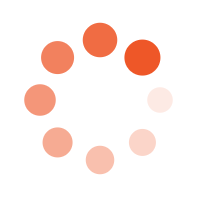Addressing Market Saturation with Design for X Methodologies in Medical Devices
By leveraging DFX methodologies, companies can position themselves as leaders in even the most crowded markets.
Market saturation presents a significant challenge in the medical device industry, particularly for companies that rely on incremental updates to mature product lines. Design for X (DFX) methodologies offer a strategic framework to differentiate products, enhance value propositions, and explore new market opportunities.
Here’s how each DFX approach can be used to mitigate the challenges of market saturation:

The focus and discipline of DFX is a powerful tool if used as part of a broader strategic approach to developing product/process differentiation, and a sustainable advantage against competition. Involve Design for X in Strategy. Once your team has determined the focus of your strategy, place the focus of design on developing competitive advantage.
At Boston Engineering, DFX is a core part of creating values during our product development process. We focus on several key DFX areas that align with our expertise:
- Design for Manufacturability (DFM)
- Design for Assembly (DFA)
- Design for Cost (DFC)
- Design for Testability (DFT)
- Design for Reliability (DFR)
- Design for Serviceability/Maintainability (DFS)
- Design for Usability (DFU)
- Design for Modularity (DFMo)
Learn more about Design for X (DFX) at Boston engineering: Boston Engineering Design for X

(continued from above)
Design for Manufacturability (DFM)
Objective: Streamline production to reduce costs and improve scalability.
Application:
- Leverage advanced manufacturing techniques to produce devices more efficiently.
- Use cost-effective materials to create variants tailored to emerging markets.
Impact on Market Saturation:
- Reducing manufacturing costs allows for competitive pricing, opening access to price-sensitive markets.
- Example: Manufacturing low-cost versions of infusion pumps for use in developing regions while maintaining core functionality.
Design for Assembly (DFA)
Objective: Simplify the assembly process to improve efficiency and reduce errors.
Application:
- Design products with fewer components to lower assembly time and costs.
- Introduce pre-assembled modules that simplify the production of product variants.
Impact on Market Saturation:
- Faster production cycles enable quicker adaptation to market demands and regional preferences.
- Example: Creating pre-assembled modular surgical instruments for different specialties.
Design for Cost (DFC)
Objective: Minimize costs while maintaining product quality.
Application:
- Focus on cost reductions in non-critical components to allocate resources to innovation.
- Optimize supply chain and logistics to reduce production overheads.
Impact on Market Saturation:
- Lowering production costs facilitates entry into new market segments without sacrificing profitability.
- Example: Producing a cost-optimized Holter monitor to cater to smaller clinics or home-use markets.
Interested in providing your product development team with DFX skills? Learn More about our Applied DFX process and development workshops.


(continued from above)
Design for Testability (DFT)
Objective: Ensure efficient and thorough testing processes.
Application:
- Incorporate automated testing systems for quality assurance during production.
- Use test-driven development methodologies to rapidly iterate new features.
Impact on Market Saturation:
- Reliable testing ensures consistent product quality, helping build trust in saturated markets.
- Example: Adding automated testing frameworks to validate multi-parameter infusion pumps in varying conditions.
Design for Reliability (DFR)
Objective: Enhance device reliability to meet user expectations.
Application:
- Develop robust designs that perform consistently across diverse environments.
- Use predictive maintenance data to improve device durability and user experience.
Impact on Market Saturation:
- Reliable devices build brand loyalty, which is crucial in a crowded market.
- Example: Designing a blood glucose meter that maintains accuracy under frequent use and extreme conditions.
Design for Serviceability/Maintainability (DFS)
Objective: Simplify maintenance to extend product lifespan.
Application:
- Implement modular designs that allow for easy upgrades and repairs.
- Create comprehensive service plans that address common user pain points.
Impact on Market Saturation:
- Enhanced serviceability differentiates products and increases user retention.
- Example: An X-ray machine with swappable components for easy maintenance and technology updates.
Design for Usability (DFU)
Objective: Improve the user experience to boost adoption and satisfaction.
Application:
- Incorporate user-friendly interfaces and ergonomic designs.
- Conduct extensive user testing to identify and eliminate barriers to adoption.
Impact on Market Saturation:
- Superior usability helps products stand out in crowded markets, increasing adoption rates.
- Example: Developing a Holter monitor with a streamlined app interface for patient data visualization.
Objective: Enable flexibility and customization through modular design.
Application:
- Design devices with interchangeable modules that can be tailored to specific user needs or regions.
- Facilitate future upgrades to extend product lifespans and keep pace with innovation.
Impact on Market Saturation:
- Modularity allows for product differentiation and customization, appealing to niche markets.
- Example: Surgical instruments with interchangeable tips for various procedures.
New eBook Available Now!
"Leveling Up Existing Products through DFX"
-Download Insights from a DFX Subject Matter Expert-
 Developing successful new products from scratch is challenging enough, but what about improving on existing designs?
Developing successful new products from scratch is challenging enough, but what about improving on existing designs?
In this eBook, we’ll dive into the real-world experiences of DFX subject matter expert John DePiano, exploring the common areas where existing product owners excel, as well as the key opportunities where targeted DFX support can drive major improvements.

Understanding the Importance of a DFX approach
Applying Design for X (DFX) methodologies upfront in product development optimizes the entire lifecycle by improving manufacturability, testability, reliability, usability, and other critical characteristics. This avoids costly redesigns later on, facilitates high-quality products that satisfy customers, reduces manufacturing and service costs, and supports flexibility through modularity and platforms. The holistic perspective of DFX drives efficient, cost-effective delivery of successful products that provide competitive advantage. Investing in DFX early pays dividends across the entire product lifespan.
Do you offer training on DFX for engineering teams?
Education is critical to effectively implement DFX principles. We provide training tailored to your engineers’ roles and product lines. This includes overall DFX methodology, deep dives into specific disciplines like design for reliability or manufacturability, and practical application workshops. Our hands-on approach combines real-world examples and case studies with tutorials on leading DFX software tools. The goal is building organizational DFX expertise and establishing repeatable processes that endure beyond individual projects. Investing in DFX knowledge pays dividends across your entire product portfolio.

Ready to Begin your next DFX Project?
 Whether you’ve created a new technology, or have an innovative way to use an existing solution, Boston Engineering will turn your ideas into reality. Our experts and Industry Partners will enhance your current team or manage the entire Product Development Process from Market Analysis to Production. Don't leave complex projects or high visibility product launches to chance. Know you're going to get the results you want by working with industry leaders in design, development, and deployment of innovative products driven by Novel Engineering. Contact Boston Engineering Today to get started.
Whether you’ve created a new technology, or have an innovative way to use an existing solution, Boston Engineering will turn your ideas into reality. Our experts and Industry Partners will enhance your current team or manage the entire Product Development Process from Market Analysis to Production. Don't leave complex projects or high visibility product launches to chance. Know you're going to get the results you want by working with industry leaders in design, development, and deployment of innovative products driven by Novel Engineering. Contact Boston Engineering Today to get started.
No matter the challenge, our team possesses the expertise in the engineering disciplines and technologies you need to bring your vision to life. Impossible Challenge? Try Us.
-1.png?width=2000&height=279&name=MED%20Coffee%20Talk%20Mastering%20Use%20Cases%20%26%20Cybersecurity%20(2)-1.png)
Impossible Challenge? Try Us.
Selecting a partner to help you complete your design project is a valuable option to reduce project duration and save money.
The Boston Engineering product development system encompasses DFX to ensure a smooth product launch and success in the marketplace. Boston Engineering has DFX knowledge and experience to address aspects and values of a product such as manufacturability, test, reliability, safety, serviceability, cost, and compliance with industry standards and government regulations.

Imagine your Impact: Stay up-to date- with the latest insights and trends we're watching. Add your email address below and sign up for a Monthly Summary of our most impactful posts!











